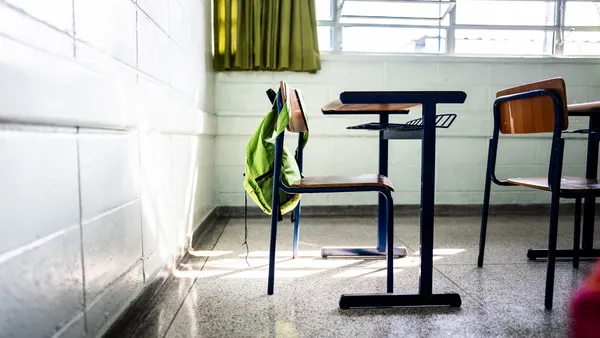Dive Brief:
-
The Washington State Office of Superintendent of Public Instruction lacked an adequate review and approval process to ensure districts' spending plans for COVID-19 emergency funds under the American Rescue Plan met all the federal requirements, a Sept. 20 report from the U.S. Department of Education Office of Inspector General said.
-
The state education agency, for example, did not validate that local spending plans were transparent and easy to understand, the OIG audit said. The state was responsive to the findings and is taking corrective action to make sure it meets federal requirements and guidance, according to the audit.
-
The audit into Washington's oversight of districts' ARP approval and monitoring processes illustrates how complex monitoring could be, given the large amount of allocations and the swiftness with which states and districts were moving to spend the one-time funds.
Dive Insight:
OIG, an independent oversight agency within the Education Department, is conducting ongoing work to ensure COVID-19 emergency funds are being used as required and reach the intended recipients. The office conducts independent audits and other reviews, and investigates allegations of misuse, theft and other criminal activity involving the relief dollars.
In a statement emailed to K-12 Dive, the Washington Office of Superintendent of Public Instruction said, "We are very pleased that the auditors did not find any instances of waste, fraud, or abuse of federal emergency relief dollars. Rather, the auditors’ observations were related to ways in which we could strengthen our processes around financial reporting, reviewing, and reconciling."
Washington has 295 school districts, seven state-tribal education compact schools, and 12 additional jurisdictions, including educational service districts. Its total ARP allocation is $1.85 billion. The state had drawn down $592 million, or 32%, by the end of the OIG audit period in October 2022.
Just a month after the ARP — which included the third installment of Elementary and Secondary School Emergency Relief funds — became law in March 2021, Washington's state education agency issued a planning guide for districts. It has also developed technical assistance through webinars, emails and phone calls.
Districts in the state were required to submit their plans for how they were addressing students' needs — known as academic plans — to the state education agency by June 1, 2021, after receiving approval from their school boards and posting the plans on their websites. The audit found that two districts did not submit academic plans until January 2023, when OIG notified the state of the issue.
Washington districts also were told to prepare separate grant applications for both the 20% ARP-required allocation to address learning loss and the remaining 80% of their ARP funds. The state, however, did not ensure districts publicly posted their entire ARP plans to their websites, which was a federal requirement.
Although the state sent a mass email during the audit to districts requiring them to post ARP grant applications, all districts lacked a publicly-posted grant application for a significant period of time even after being allocated ARP ESSER funds, the audit said.
"As a result, the public dissemination and transparency requirements of the ARP ESSER program were not fully met, and the public was not fully aware of how ARP ESSER funds were planned to be allocated and spent by their LEAs [local education agencies]," OIG said.
Additionally, six Washington districts did not submit grant applications within the federally-required 90-day period of receiving their allocations, and one of the six still had not submitted its grant application at the time of the OIG audit. State education leaders identified another 14 districts that had yet to submit applications.
OIG said that the state education agency provided outreach to the 15 districts. Within two weeks, nine districts had not yet submitted a grant application, four did file applications, and two rejected the funding.
The audit also recommends that the state develop and implement reimbursement and monitoring protocols for district ARP expenditures.













